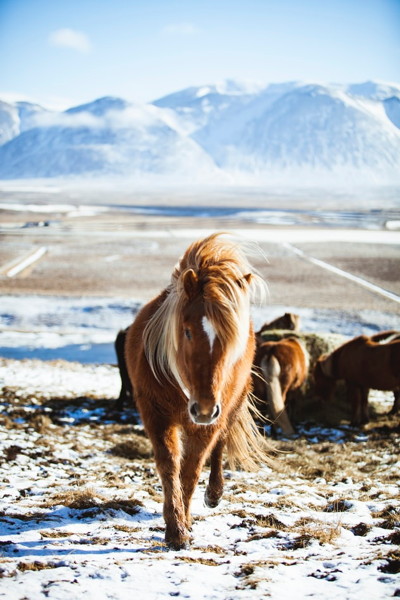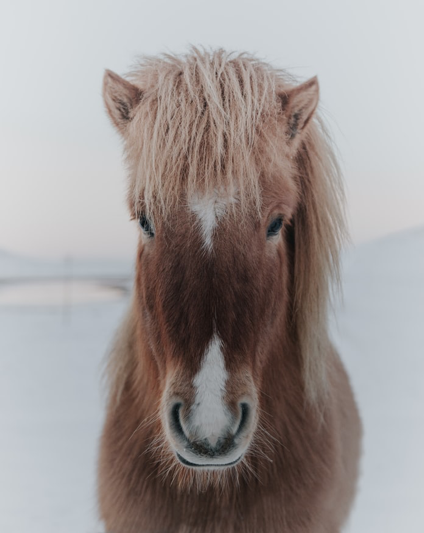The Icelandic Horse
Are you on your way to Iceland and happen to love horses ?
You may have heard of the icelandic horse, but what is so special about them?
The icelandic horse is very small compared to other breeds and some people even dare to call them ponys. They really are just normal horses and not ponys! They usually live for 35-40 years and are a very tough species.
Even though they are small they weight between 300 – 380kg (730-840 lb) and come in number of coat colours including chestnut, dun, bay, black, palomino, gray, pinto and roan.
They are the only horse breed in Iceland and they are still used in sheepherding work and probably will continue to do so in the foreseeable future.
If you are planning to venture ouf of the capital, you can expect to see horses in groups in the wild nature all around Iceland all year round. But do not worry, even though you see the horses in the winter snow. They really are comfortable as they grow a winter coat that keeps them warn over the harsh winter months.
If you decide to stop somewhere and see those amazing animals please be careful and park somewhere that is allowed and where the horses can not reach the vehicle, that is because they may want to have a small taste of the car. The Icelandic horse may tent to bite the exterior of the car and cause dents and scratches.
The icelandic breed has a double coat developed for extra insulation in cold temperatures because they really need it in the winter time here.

Every year there is a world championship of the Icelandic Horse. At these championships they compete in the two gates that other horse breeds do not have.
The Icelandic horse is a five gated breed not three like usual horses and it‘s known for its sure footedness and ability to cross rought terrain.
The Icelandic goverment is very protective of the Icelandic horse, and all horses from Iceland that take part in these competitions are never allowed to come back to Iceland once they have been abroad. That is how we have kept the Icelandic horse as strong and well preserved as they are to this day. After an Icelandic horse has been taken abroad to compete, they are usually sold.
The two extra gates are :
Tölt is the most unique four-beat lateral gate and the Icelandic horse is best known for that gate. To explain how that gate works, the horse’s legs move well under the body and then carry more weight on the hind end that allows the front to rise, be loose and free. The Tölt is very smooth to ride since there is no suspension between striders, as in the case in trot or canter. It can be ridden from very slow speed up to very fast speed but that also depends on the horse.
Flying Pace is a fast and high speed gait during which both legs on one side of the horse simultaneously touch the ground. They can go up to 48 kmh (30 mph) on the flying pace. The gait is usually used for short distances and can equal the speed of a full gallop. That is why the flying pace is used for racing. At one interval all four hooves of the Icelandic Horse are suspended off the ground during a flying pace. Riding at a flying pace is considered the crown of horsemanship.
There are few places here where you can go on riding tours with guides in the beautiful Icelandic nature on the unique Icelandic horse. The tours are from 30 minutes up to some days. And just know... that you do not need to be an expert with horseback riding , the guides will show you all the basics and take good care of you.

